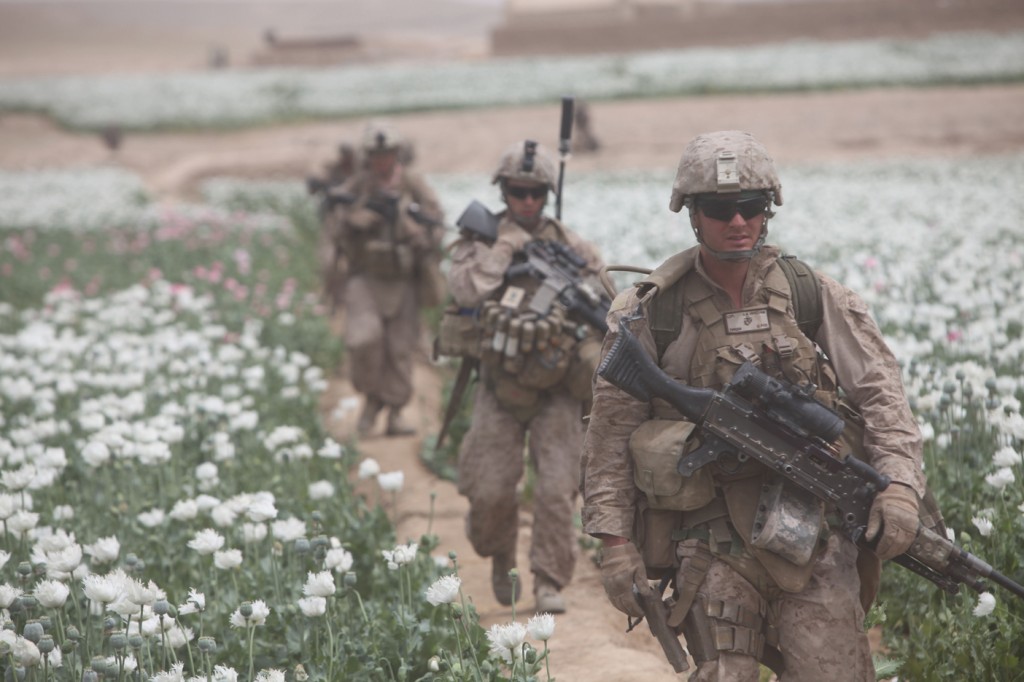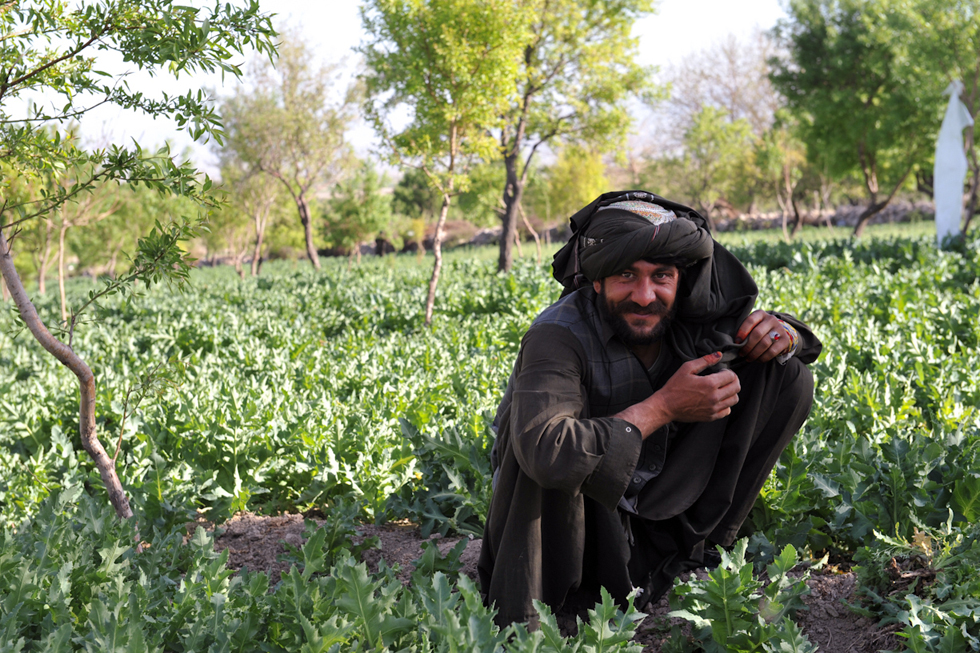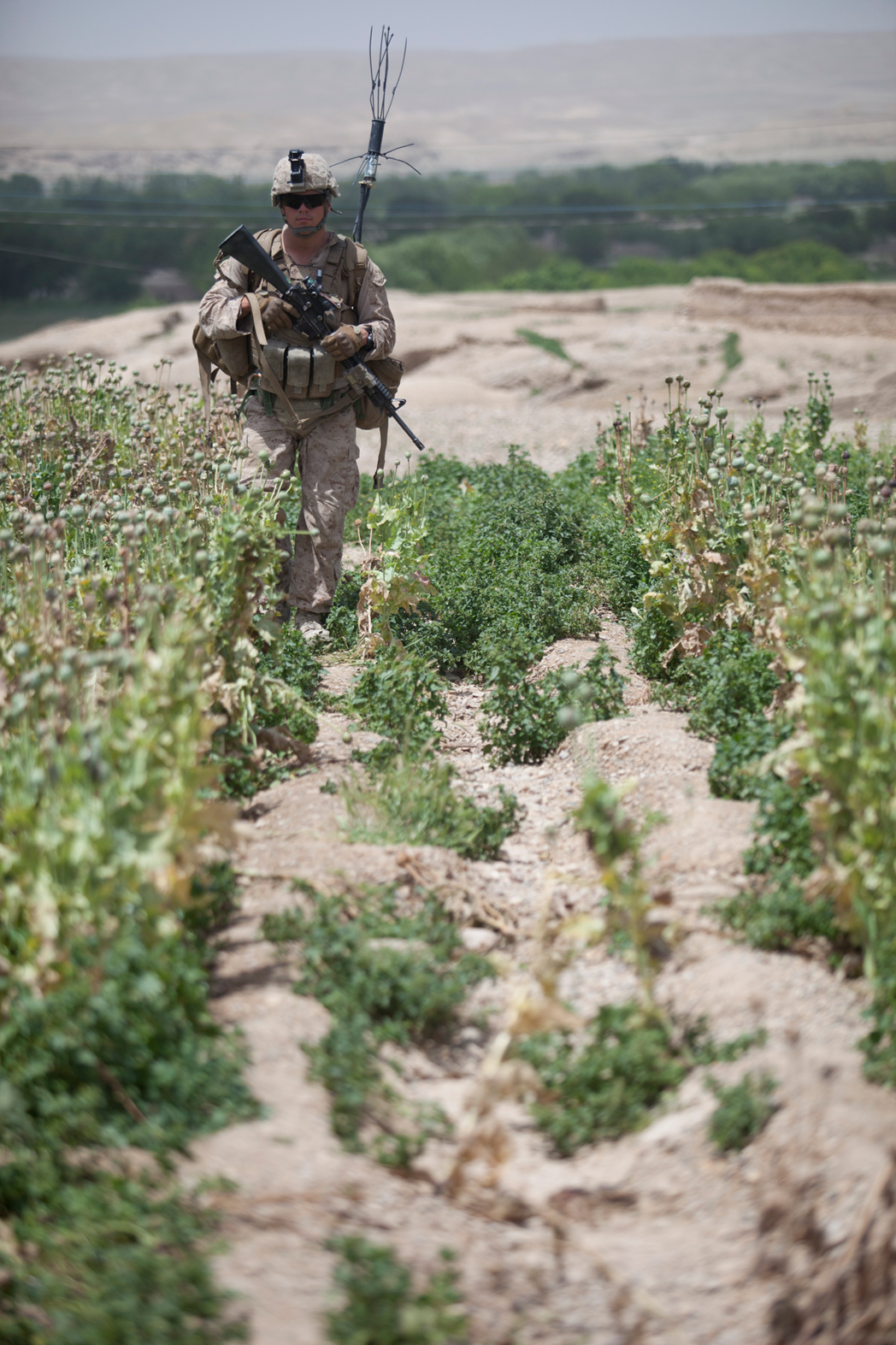Afghan Opium Production Has Risen 61% Since 2010
Opium production in Afghanistan rose by 61% this year compared with 2010, according to a UN report.
The increase has been attributed to rising opium prices that have driven farmers to expand cultivation of the illicit opium poppy by 7% in 2011.
Last year opium production halved largely due to a plant infection which drastically reduced yields.
Afghanistan produces 90% of the world’s opium – 5,800 tonnes this year – the main ingredient of heroin.

Goran Tomasevic / REUTERS file
U.S. Marines patrol in front of a poppy field in a village in the Golestan district of Farah province, May 4, 2009.
WASHINGTON -- The U.S. Army has investigated 56 soldiers in Afghanistan on suspicion of using or distributing heroin, morphine or other opiates during 2010 and 2011, newly obtained data shows. Eight soldiers died of drug overdoses during that time.
While the cases represent just a slice of possible drug use by U.S. troops in Afghanistan, they provide a somber snapshot of the illicit trade in the war zone, including young Afghans peddling heroin, soldiers dying after mixing cocktails of opiates, troops stealing from medical bags and Afghan soldiers and police dealing drugs to their U.S. comrades.
In a country awash with poppy fields that provide up to 90 percent of the world's opium, the U.S. military struggles to keep an eye on its far-flung troops and monitor for substance abuse.
Photos of U.S. and Afghan Troops Patrolling Poppy Fields June 2012

U.S. Marines with Fox Company, 2nd Battalion, 5th Marine Regiment, Regimental Combat Team 6, patrol through a poppy field during Operation Lariat in the Lui Tal district, Helmand province, Afghanistan, April 16, 2012. The Marines conducted the operation to disrupt enemy logistics and establish a presence in the area. (U.S. Marine Corps photo by Lance Cpl. Ismael E. Ortega/Released)
An Afghan farmer watches from a poppy field as the 288th Sapper Company, a National Guard Unit out of Houston, Miss., performs a dismounted patrol in the Uzugan province in southern Afghanistan, April 2, 2012. Dismounted patrols, in conjunction with their route clearance missions, have lead to a significant decrease in insurgent activity in the Dorifshan and Baluchi valleys and an increase in not only the safety and security of the coalition and Afghan Security Forces, but also helped the unit form a bond with the local Afghan civilians.
U.S. Marine Corps Lance Cpl. Nicholas Gonzalez, a machine gunner with 2nd Squad, 2nd Platoon, Charlie Company, 1st Battalion, 7th Marine Regiment, Regimental Combat Team 6, patrols through a poppy field in Sangin, Helmand province, Afghanistan, April 27, 2012. Marines conducted the patrol to provide security in the area and interact with the local population. MORE PHOTOS FROM PI
1
(opium, morphine and heroin). The large
majority use heroin, the most lethal form. More users
die each year from problems related to heroin use, and
more are forced to seek treatment for addiction, than for
any other illicit drug. Among illicit narcotics, opiates are
also the most costly in terms of treatment, medical care
and, arguably, drug-related violence. In addition, heroin
is the drug most associated with injection, which brings
about a host of acute and chronic health problems,
including the transmission of blood-borne diseases such
as HIV/AIDS and Hepatitis C. In Central Asia, Ukraine
and the Russian Federation, injecting opiates is linked to
nearly 60-70% of all HIV infections.



No comments:
Post a Comment